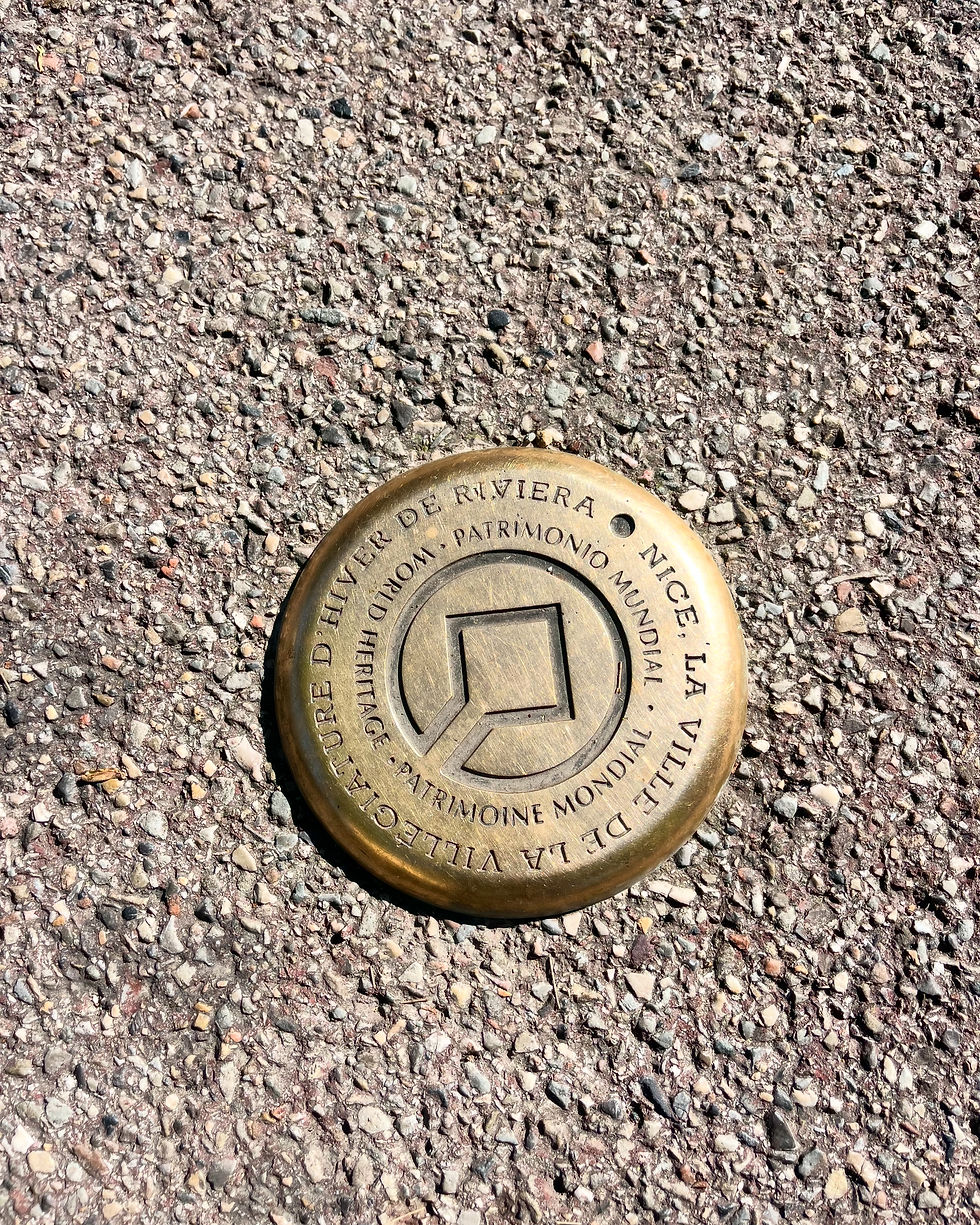Winter vacation in Nice: an open-air world heritage site
- Jean-Christophe DIMINO

- May 12
- 3 min read
Updated: May 20

Since the summer of 2021, Nice has been a UNESCO World Heritage Site as a "Winter Resort Town of the Riviera." This prestigious label recognizes the historical, architectural, and landscape significance of the city, which became one of the most popular winter destinations for the European aristocracy from the 19th century onward.
For the attentive walker, this recognition materializes discreetly but symbolically on the Nice cobblestones: hallmarks mark the emblematic sites and buildings of this era. Each bronze nail marks a piece of the heritage puzzle that makes up the soul of Nice.
Here is a guided walk, neighborhood by neighborhood, to discover these witnesses of a golden age still very much alive:
Cimiez: elegance in the Belle Époque
The Cimiez district is home to some of the finest examples of resort architecture. It was popular with Russian nobility and British aristocracy. For example, it features:
The Regina , a former palace turned residence, where Queen Victoria stayed.
The Grand Palais , a Belle Époque jewel with its emblematic domes.
The Hermitage , another remarkable building, typical of luxury resort hotels.
The Cimiez Monastery and its belvedere gardens, which recall the Mediterranean influences dear to winter visitors.
Golden Square and Promenade des Anglais: the heart of the resort
This is the district that most embodies the prestige of winter resorts:
The Hôtel Negresco , a jewel of the Belle Époque and a reception venue for crowned heads and artists.
The Palais de la Méditerranée , a testament to Art Deco, is now part of a luxury hotel.
The Palais Masséna , now a museum, was a sumptuous winter residence.
Le Port – Mont Boron: dream villas
Further east, the Mont Boron district and its foothills offer spectacular views.
The Villa Beau Site or the Villa les Palmiers , witnesses of luxury residential architecture.
The small streets of the district are still marked by the old gates, staircases and lush gardens which welcomed winter visitors.
Musicians and Thiers: structured urban expansion
This neighborhood was designed to accommodate the wealthy classes in search of luxury apartments.
The bourgeois buildings of rue Verdi or rue Gounod, with ornate facades and long balconies.
Nice-Ville station , itself built to facilitate the arrival of winter visitors.
Libération – Borriglione: the rise of the middle classes on vacation
Less aristocratic, but just as revealing of the holiday spirit, this district developed around the tramway and the market.
Many buildings from the 1900s-1930s still feature Art Deco and Art Nouveau details.
Individual villas, often renovated, retain their period gardens.
Recognition that commits the future
This World Heritage listing is not only a tribute to the past. It also commits Nice to preserving and promoting this unique urban fabric, in harmony with its natural environment. It also reminds visitors—and the people of Nice themselves—of the cultural richness of a city shaped by travel, voluntary exile, care, and discreet luxury.
Through these bronze punches fixed in the ground, it is an invitation to look up , to stroll with curiosity, to rediscover historic Nice like an open-air museum .













Comments